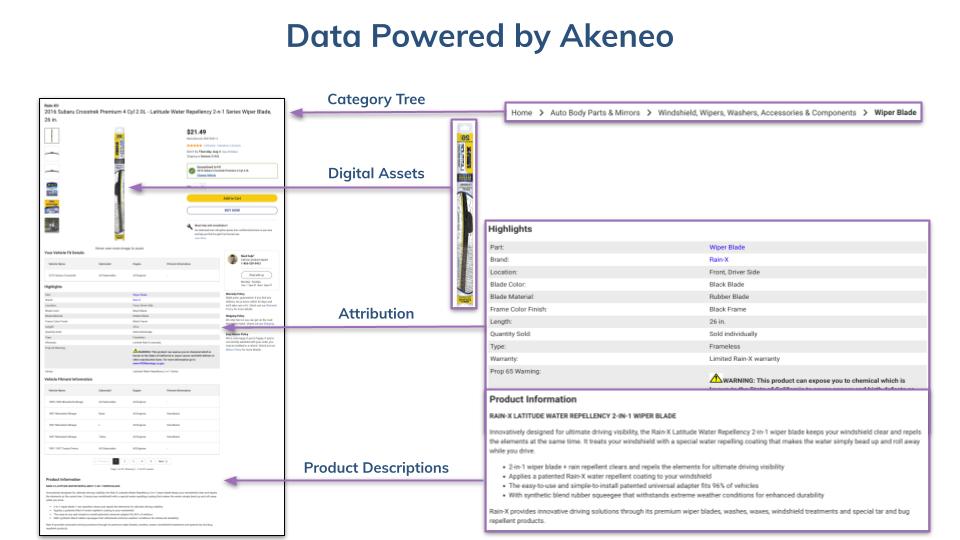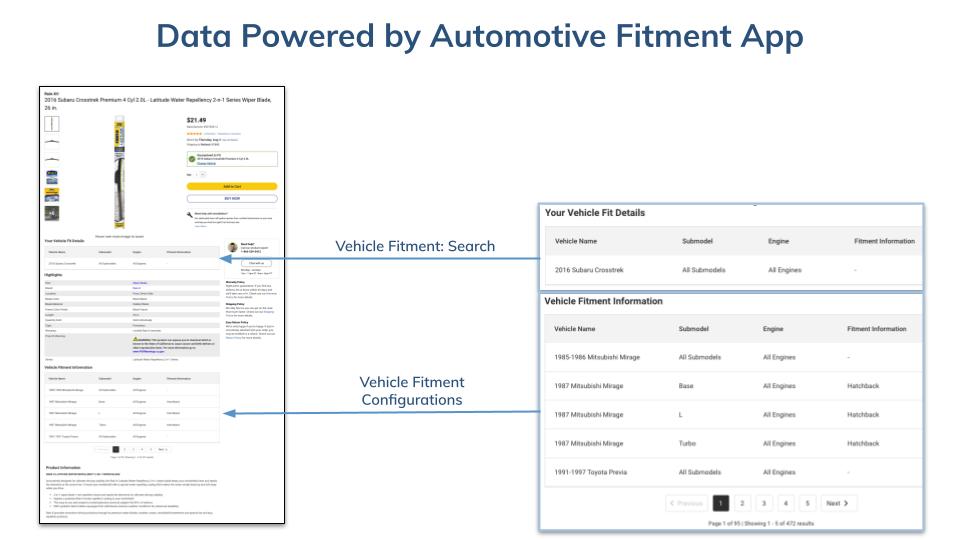With a number of professionals coming from the automotive industry, Sitation has a deep understanding of the needs and thus the solution to automotive’s core challenges. Product Information Management (PIM) systems can improve data completeness and management while eliminating manual processes, but how does fitment work within these systems?
The recently released Automotive Fitment App partners with Akeneo PIM, offering a comprehensive data solution to automotive industry manufacturers, retailers, and distributors.
Senior Director, Solution Architecture George Dzuricsko took a moment to explain the use case and functionality of the new Automotive Fitment App.
 Aishia Williams: Hi George! Thanks for taking the time to talk with me about the development of the Automotive Fitment application.
Aishia Williams: Hi George! Thanks for taking the time to talk with me about the development of the Automotive Fitment application.
 George Dzuricsko: Hi Aishia. I’m happy to share.
George Dzuricsko: Hi Aishia. I’m happy to share.
Aishia: What is this Automotive Fitment App?
George: So, I think the first question is not about “what is the app?”
But it’s more about what is actually the problem statement for the automotive industry.
When we set out to create a focused automotive practice, we already had skilled business consultants and a talented solution architect with experience in the industry.
I joined this Automotive Solutions Team and we began with, “How do we use PIM to solve automotive industry challenges?”
Originally, I didn’t think automotive was a good fit for a traditional standalone PIM. And that’s because there are two separate problem statements.
Aishia: Really? Two that aren’t related?
George: One call out is about data for product description, that’s PIM right?
But the other call out is about the data of the fitment pieces.
Because of how most people look for products in the automotive space, the primary driver of all search and all products that are being displayed is, “Will this fit my vehicle?”
Aishia: That makes sense. Can you think of a practical example?
George: Sure.
Totally “hypothetically” speaking, you’re a dirty mountain biker with a very patient wife who’s losing most of her patience with your ability to keep things clean.
The ability to have really nice protective coverings on the inside of your car is actually really helpful, right? But those are laser measured. They have to fit, and they fit down to the specific trim on the year-making model. Being able to search based on my specific vehicle means I can get well fitted covers on the first try.
Aishia: Ahh, got it. Thank you.
George: Product offerings are evolving on a monthly basis.
As we looked for ways the automotive industry could keep up with the ever increasing options we found that there are a bunch of old school databases being used to store this fitment data but not much else.
People want a complete description and they want to have a good experience. Fitment solutions don’t offer that.
While a typical standalone PIM offers you customer experience improvement solutions, including associations, by themselves they do not meet the need for fitment.
Aishia: The need is a fitment tool and a PIM to actually meet customer needs.
George, What is the difference between compatibility and associations in this context?
George: Most PIMs have the ability to relate a couple of products to each other, right?
We have all seen kits, generally small groupings of products, typically under 10. These are items that typically associate with each other.
For example, if somebody looks at a 10 inch frying pan, they probably are also gonna look at a 12 inch frying pan of the same brand. Right? It’s that type of referral model that you see on any major e-commerce system.
Now the fitment side of things is less about that and more saying, “Hey! If you’re buying a new electric induction stove you will want to see all of the frying pans that fit and have compatibility.”
So that’s talking tens to twenties, to hundreds of thousands of compatible products.
Aishia: So compatibility is more “can these things work together?”
Association is more about suggesting things that are often used together.
If you buy notebooks or pencil cases you might also need highlighters.
George: Yep.
Aishia: We always think about that compatibility with cars but it is true of other purchase needs as well.
George: Exactly.
We actually have a second app that should be coming out on the heels of the Automotive Fitment App.
There’s a little bit of secret sauce that we’ve put into the automotive app to make it specific to the automotive industry but the idea of categorizing products and associating the product relationship, not to a singular product, but actually to another tree, like in another node of all of the products that belong in that category tree is a cross reference where you could match two different areas.
Aishia: Nice! I would love to share a visual example for automotive fitment if we have one.
George: Alright.
So basically, you’ve got this product, right. And you’ve got an asset. You’ve got digital. You’ve got a category tree. Which is typically breadcrumbs. You’ve got attribution. You’ve got product descriptions.
All of this is PIM powered data. This is data that’s best enriched in a PIM where you’re checking quality.
You’re checking completeness. You may be managing it across multiple languages where you’ve got localization at play. That data can then give a rich product experience.
But when you’re buying the fitment side of it you have to have the vehicle information. So you’ve got vehicle name including the make, model, and year. You’ve also got the ability to add sub-models and engines.
So windshield wiper is actually a pretty wide amount of fitment in terms of how that how that can work. But you also can have it cascade. So you can have the association between the product and the year make model. You could even have the fitment belong only to the model.
Aishia: Can you tell me more about how most of automotive is managing all of this currently?
George: Part of why we’re leaning into the automotive industry is because we know it well.
We have expertise there but we also know that this industry is ripe for massive improvement and needs modern solutions.
Common fitment databases, such as the Autocare Association often use standards that are thought of in a very traditional way. And typically when you build off of these types of old standards, your systems are really brittle.
Most people are using systems that can’t handle changes in edits post after the fact to the fitment. And so what we’re trying to do is make sure that we can manage that fitment on the side.
Our automotive fitment app allows you to load in the fitment data while not undermining or giving a subpar PIM experience.
Aishia: This app is only available for Akeneo right now?
George: Yes.
As a Gold Solution Partner, the Akeneo App Store is a perfect place to introduce this solution.
It’s architected in a way to allow you to enrich your product data without any customization to the SAAS model of Akeneo, a model that much of the industry has moved forward to.
And then what it allows you to do is pass that data back to Akeneo in the form of a fitment file that can then still be accessed via the Akeneo API endpoints.
Aishia: Well said. Thank you.
So then, would you say that automotive players have been less likely to use a PIM solution?
George: I’d say this app makes a PIM more attractive.
I think concern about online product experience or about returns happening because you’ve got incomplete product data are core reasons why people invest in PIMs.
And if you’re looking at the notion of how people are shopping for automotive products in various ecommerce systems, and even when they go into a store, this app resolves that second crucial component. “Will this fit my vehicle?”
Aishia: So, Automotive Fitment App allows for all the benefits of Akeneo PIM but with the critical piece of how parts are shopped for.
George: And that is not to say there aren’t other ways people have been managing this data relationship.
This presents a modern solution that works with a fully beneficial PIM rather than fitment tools that have a couple of attributes that don’t support modern architecture quite the way that they should.
Aishia: Thank you for taking the time to explain.
Please remind us where Akeneo users can find the Automotive Fitment App?
George: The Automotive Fitment App is available in the Akeneo App Store.
Contact us for more information on how Sitation can help you leverage the power of Akeneo, while maintaining accurate fitment standards.

